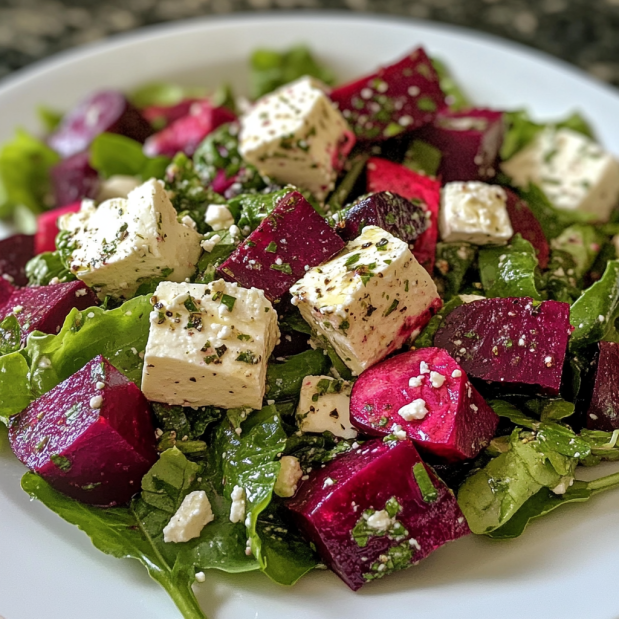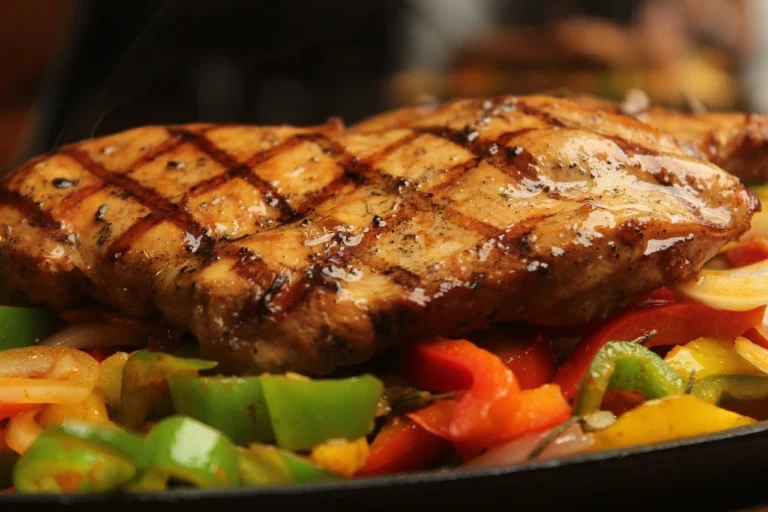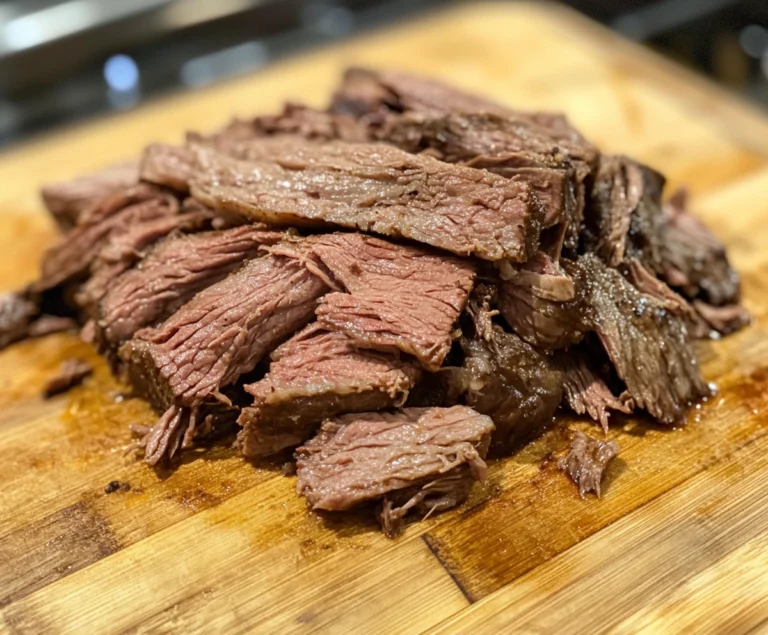Beet and Feta Salad: Health Benefits, Variations & Pairings
Part 1: Introduction and Basic Information
Introduction
Beet and feta salad is a dish that combines the earthy sweetness of beets with the tangy creaminess of feta cheese to create a vibrant and nutritious meal. This salad is not just a feast for the eyes with its rich colors but also a powerhouse of nutrients, making it a popular choice among health-conscious individuals. It has become a staple in modern culinary trends, especially as more people are leaning towards incorporating more plant-based foods into their diets. In this comprehensive guide, you’ll learn how to prepare a classic beet and feta salad, explore various creative variations, and discover tips on serving and pairing this delightful dish to suit any occasion.
Nutritional Benefits of Beet and Feta Salad
Beets are celebrated not only for their deliciously sweet and slightly earthy flavor but also for their remarkable health benefits. These root vegetables are a rich source of essential nutrients that promote overall well-being. Here’s a closer look at what makes beets so beneficial:
- High in Dietary Fiber: Beets are an excellent source of dietary fiber, which aids in digestion, helps maintain a healthy weight, and supports heart health by lowering cholesterol levels.
- Packed with Vitamins and Minerals: Beets are rich in essential vitamins and minerals, including vitamin C, folate, potassium, and manganese. These nutrients are crucial for maintaining a healthy immune system, reducing inflammation, and supporting bone health.
- Antioxidant Powerhouse: Beets contain betalains, powerful antioxidants that help fight oxidative stress and reduce the risk of chronic diseases such as heart disease and cancer.
- Nitrate-Rich for Heart Health: The natural nitrates in beets are converted into nitric oxide in the body, which helps improve blood flow, reduce blood pressure, and enhance exercise performance.
Feta cheese adds a contrasting tangy flavor and creamy texture to the salad while also providing significant nutritional benefits:
- Protein and Calcium: Feta cheese is a good source of high-quality protein, essential for muscle repair and growth. It also provides calcium, which is vital for strong bones and teeth.
- Low in Calories: Compared to other cheeses, feta is relatively low in calories, making it a suitable choice for those looking to maintain or lose weight.
- Probiotics for Gut Health: Feta is a fermented cheese, which means it contains probiotics that promote a healthy gut microbiome, supporting digestion and immune function.
Combining these two powerhouse ingredients, beet and feta salad is not only delicious but also a nutrient-dense dish that can support heart health, boost energy levels, and enhance overall wellness. To further explore the benefits of incorporating beets into your diet, you can read more about the health benefits of beets.
History and Origins of Beet and Feta Salad
The beet and feta salad has deep roots in Mediterranean cuisine, where the tradition of using fresh, wholesome ingredients has been refined over centuries. Beets have been a part of human diets since ancient times, with their origins tracing back to the Middle East and Mediterranean regions. Initially grown for their leafy greens, beets were later valued for their sweet, bulbous roots.
Feta cheese, on the other hand, has a rich history that spans over 8,000 years. Originating in Greece, feta is one of the world’s oldest cheeses. Made from sheep’s milk (or a combination of sheep and goat’s milk), it is known for its crumbly texture and tangy flavor. Feta has been a staple in Greek cuisine for millennia and is often paired with fresh vegetables, herbs, and olive oil.
The combination of beets and feta in a salad likely emerged as part of the broader trend of Mediterranean diets becoming popular worldwide. As people sought to incorporate more plant-based, nutrient-rich foods into their diets, the beet and feta salad gained recognition for its vibrant flavors, nutritional benefits, and ease of preparation. To learn more about the rich history of feta cheese and its cultural significance, you can visit this resource.
Part 2: Recipe Breakdown and Variations of Beet and Feta Salad
Classic Beet and Feta Salad Recipe
The classic beet and feta salad recipe is beloved for its simplicity and the way it allows the natural flavors of the ingredients to shine. Here’s how to make this delicious dish:
Ingredients:
- 4 medium-sized beets, roasted and sliced
- 100g feta cheese, crumbled
- 1/4 cup walnuts, toasted
- 2 tbsp olive oil
- 1 tbsp balsamic vinegar
- Salt and pepper to taste
- Fresh herbs (optional: parsley or mint)
Instructions:
- Roast the Beets: Preheat your oven to 400°F (200°C). Wrap each beet in aluminum foil and place them on a baking sheet. Roast for about 45 minutes, or until the beets are tender when pierced with a fork. Once done, allow the beets to cool, then peel off the skin and slice them into thin rounds or wedges.
- Prepare the Salad: In a large bowl, combine the sliced beets, crumbled feta cheese, and toasted walnuts.
- Dress the Salad: In a small bowl, whisk together the olive oil and balsamic vinegar. Drizzle the dressing over the salad, then season with salt and pepper to taste.
- Serve: Gently toss the salad to combine all the ingredients. If desired, garnish with fresh herbs like parsley or mint for an added burst of flavor and color. Serve immediately.
Tips for Success:
- Roasting the beets brings out their natural sweetness and intensifies their flavor. Make sure not to overcook them, as they should retain a bit of firmness for texture.
- Use high-quality feta cheese for the best flavor. Sheep’s milk feta is preferred for its authentic tangy taste, but cow’s milk feta can be used as well.
- For a richer flavor, consider using an aged balsamic vinegar, which adds a complex sweetness to the dressing.
Variations of Beet and Feta Salad
While the classic beet and feta salad is delicious on its own, there are countless ways to customize and enhance the dish to suit your taste preferences and dietary needs. Here are some popular variations:
- Roasted Beet and Feta Salad with Walnuts: This variation adds a crunchy element to the salad by incorporating toasted walnuts. The nutty flavor of the walnuts pairs perfectly with the sweetness of the beets and the tanginess of the feta. To prepare, simply add a handful of chopped, toasted walnuts to the classic recipe.
- Beet and Feta Salad with Arugula and Balsamic Glaze: For a peppery twist, add a handful of fresh arugula to the salad. The bitterness of the arugula balances the sweetness of the beets and the creaminess of the feta. Drizzle with a balsamic glaze for an extra layer of flavor.
- Warm Beet and Feta Salad with Quinoa: Transform the salad into a heartier meal by adding quinoa. This protein-packed grain adds texture and makes the dish more filling. Simply cook 1 cup of quinoa according to package instructions and toss it with the other salad ingredients while still warm.
- Beet and Feta Salad with Citrus Dressing: Brighten the salad with a citrus-based dressing made from freshly squeezed orange juice, lemon juice, and a touch of honey. The citrus notes complement the earthy beets and tangy feta beautifully.
- Substitutes for Feta Cheese: For those who are vegan or lactose intolerant, you can substitute the feta with crumbled tofu, almond-based cheese, or coconut-based feta. These alternatives provide a similar texture and flavor profile, ensuring the salad remains delicious.
Pairing Suggestions Beet and Feta Salad
The versatility of beet and feta salad means it pairs well with a wide variety of foods and beverages. Here are some ideas to enhance your dining experience:
- With Bread: Serve the salad alongside a slice of warm, crusty whole-grain bread or Pumpkin Banana Loaf to soak up the delicious dressing. The combination of flavors and textures is a delightful start to any meal.
- With Wine: A glass of dry white wine, such as Sauvignon Blanc or Pinot Grigio, pairs perfectly with the salad. The crisp acidity of the wine complements the tanginess of the feta and the sweetness of the beets.
- With Main Courses: The salad is an excellent side dish for grilled meats or seafood. For example, it pairs beautifully with Alice Springs Chicken, a dish that combines savory grilled chicken with a creamy mushroom sauce, creating a harmonious balance of flavors.
- With Vegetarian Dishes: If you’re serving a vegetarian meal, consider pairing the salad with a hearty vegetable-based main, such as roasted vegetables or a quinoa-stuffed bell pepper.
Part 3: Serving and Additional Tips of Beet and Feta Salad
Presentation Tips
Presentation plays a crucial role in elevating the dining experience, and with a dish as visually striking as beet and feta salad, it’s easy to create a show-stopping presentation. Here are some tips to make your salad look as good as it tastes:
- Choose the Right Plate: Use a white or neutral-colored plate to allow the vibrant colors of the beets and feta to stand out. The contrast between the deep red of the beets and the white feta is visually stunning.
- Layering: Arrange the beet slices in a circular pattern on the plate, slightly overlapping each slice. Sprinkle the crumbled feta and walnuts over the top, ensuring even distribution.
- Garnishing: Fresh herbs such as parsley, mint, or basil not only add a pop of color but also enhance the flavor of the salad. You can also add a sprinkle of pomegranate seeds for a festive touch and an additional burst of sweetness.
- Drizzling: Drizzle the dressing or a balsamic glaze artistically over the salad just before serving. This not only adds flavor but also gives the salad a polished, restaurant-quality appearance.
Storage and Shelf Life
To enjoy the salad at its best, it’s important to store it properly. Here’s how to keep your beet and feta salad fresh:
- Refrigeration: Store the salad in an airtight container in the refrigerator. When stored correctly, the salad will stay fresh for up to 3 days. However, for the best flavor and texture, it’s recommended to consume the salad within 24 hours of preparation.
- Dressing Tips: If you plan to store the salad, keep the dressing separate and add it just before serving. This prevents the salad from becoming soggy and ensures that the flavors remain vibrant.
- Leftover Beets: If you have leftover roasted beets, you can store them in an airtight container in the refrigerator for up to a week. They can be used in other recipes, such as adding to a Zucchini Mushroom Recipe or blending into a smoothie for an extra boost of nutrients.
Serving Suggestions for Different Occasions
Beet and feta salad is a versatile dish that can be served in various settings, from casual lunches to formal dinners. Here are some ideas on how to incorporate it into your menu:
- As a Starter: Serve a small portion of the salad as an appetizer. The bright flavors and refreshing taste make it an excellent starter to whet the appetite before the main course.
- As a Main Dish: For a light and nutritious meal, serve the salad as a main dish. To make it more substantial, add protein-rich ingredients like quinoa, chickpeas, or grilled chicken. This transforms the salad into a filling, balanced meal that’s perfect for lunch or dinner.
- For Holiday Meals: The vibrant colors of the beets and feta make this salad a beautiful addition to any holiday table. Consider garnishing the salad with pomegranate seeds for an extra festive touch. It pairs well with roasted meats and is a refreshing contrast to heavier holiday dishes.
- For Potlucks and Picnics: The salad is also a great option for potlucks and picnics. It can be made ahead of time and transported easily. Just remember to add the dressing at the last minute to keep the salad fresh and crisp.
Part 4: FAQs and Conclusion
Frequently Asked Questions
Can I make beet and feta salad ahead of time?
Yes, you can prepare the salad up to 24 hours in advance. However, for the best results, keep the dressing separate and add it just before serving to prevent the salad from becoming soggy.
What is the best way to cook beets for salad?
Roasting is the preferred method for cooking beets in this salad. Roasting enhances the natural sweetness of the beets and intensifies their flavor. Alternatively, you can steam or boil the beets, but the flavor will be milder.
Can I use canned beets instead of fresh ones?
Yes, canned beets are a convenient option if you’re short on time. Just be sure to drain them well and opt for varieties without added sugar or preservatives. Fresh beets are preferred for their flavor and texture, but canned beets can work in a pinch.
Is beet and feta salad suitable for a keto diet?
Yes, the salad is low in carbs, making it a great choice for a keto-friendly meal. Beets contain some natural sugars, so be mindful of the portion size if you’re strictly counting carbs. Ensure the dressing ingredients are also keto-compliant by using olive oil and vinegar without added sugars.
What can I substitute for feta cheese?
If you’re looking for a non-dairy alternative, consider using crumbled tofu, almond-based cheese, or coconut-based feta. These alternatives provide a similar texture and flavor profile, ensuring the salad remains delicious while accommodating dietary restrictions.
Can I add other vegetables to the salad?
Absolutely! The salad is versatile, and you can add a variety of vegetables to suit your taste. Some great additions include cucumber, red onion, avocado, or roasted carrots. These vegetables add texture, flavor, and additional nutrients to the dish.
Conclusion
Beet and feta salad is a dish that not only delights the taste buds but also nourishes the body. With its vibrant colors, diverse textures, and rich flavors, it’s a versatile option that fits perfectly into any meal plan. Whether you stick to the classic recipe or experiment with variations, this salad is sure to become a favorite in your culinary repertoire. Try it today, and share your creative takes on this delicious dish!
This comprehensive guide equips you with everything you need to know about making a delicious, nutritious, and visually stunning beet and feta salad. From the health benefits of its ingredients to the various ways you can customize the dish, there’s something for everyone in this timeless recipe. Whether you’re preparing it for a casual lunch, a family dinner, or a special occasion, this salad is sure to impress. Don’t forget to pair it with complementary dishes and drinks to enhance the overall dining experience. Enjoy!







